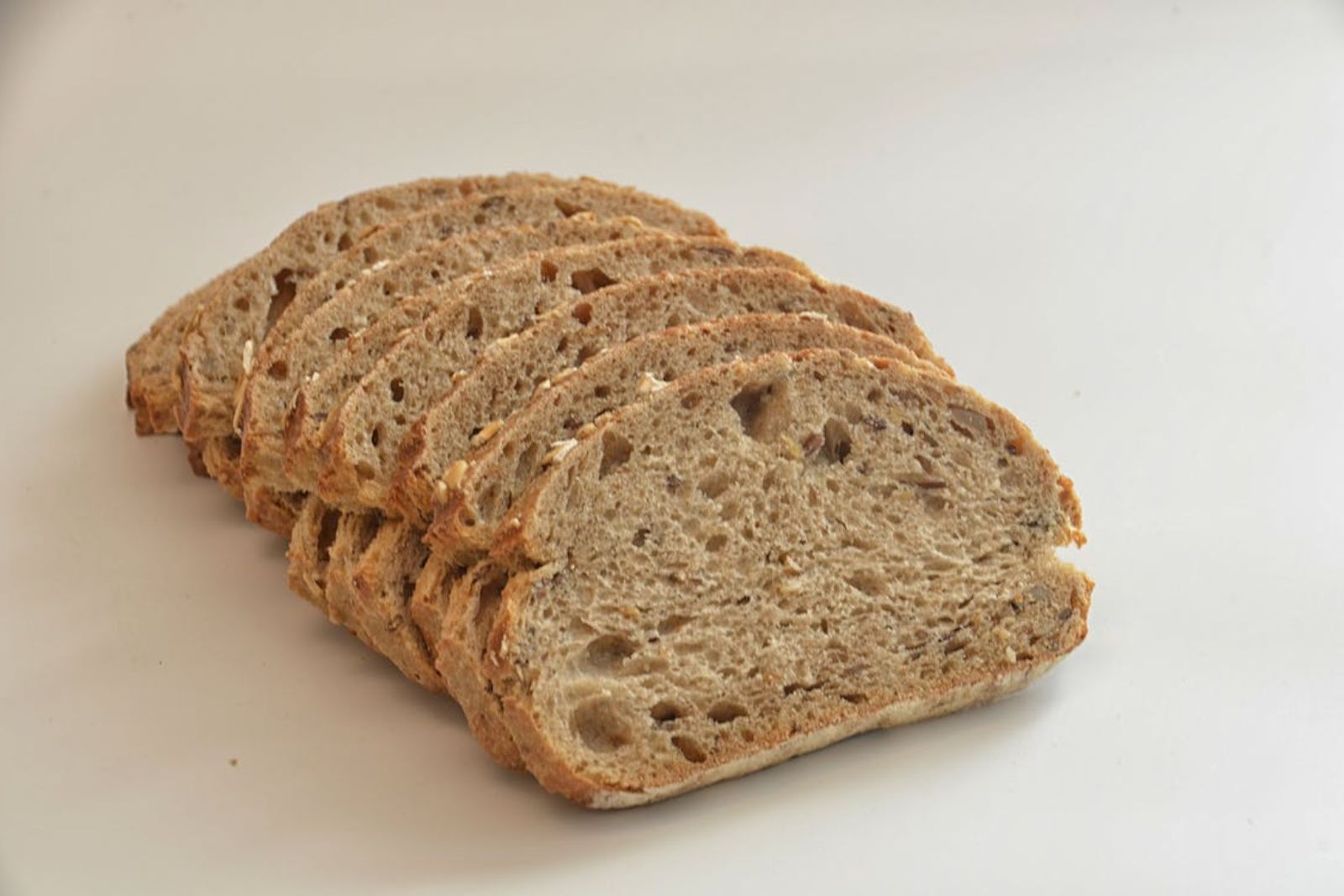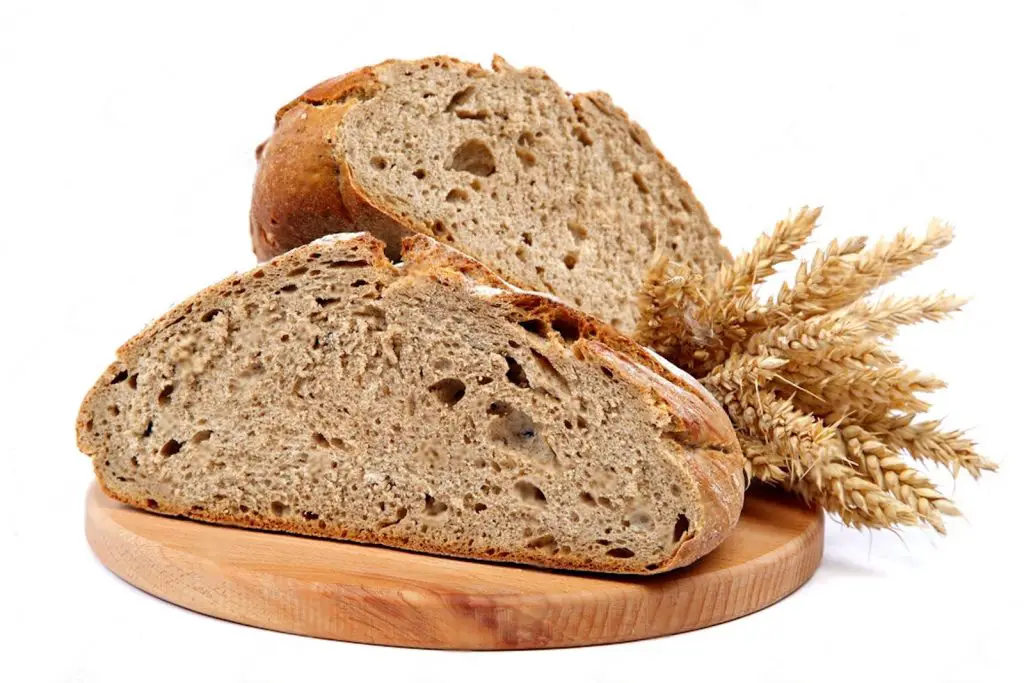
A freshly baked bread loaf, where the intoxicating aroma and warm, golden crust can turn any moment into a delightful experience. Bread loaves come in various shapes and sizes, from classic white and whole wheat loaves to artisanal creations infused with grains, seeds, and flavors. Whether you’re a seasoned baker or a bread lover who enjoys store-bought loaves, freezing bread can be a game-changer when it comes to convenience and preserving the freshness of your favorite loaves. In this guide, we’ll explore the art of freezing bread loaves, providing you with tips and techniques to ensure that your frozen bread retains its delicious taste, soft texture, and delightful aroma. So whether you’re planning ahead for a busy week or simply want to savor a fresh slice of bread anytime you crave it, freezing bread loaves is a practical solution that allows you to enjoy the pleasure of homemade or store-bought bread whenever you desire.
Here are the simple steps to freeze bread loaf:
Step 1: Select Fresh Bread Loaf
Selecting a fresh bread loaf is crucial when it comes to freezing bread. The quality of the bread at the time of freezing directly impacts its taste and texture when thawed. It is recommended to choose a loaf that is still at its peak freshness.
Fresh bread has a delightful aroma, a soft and springy texture, and a rich flavor. When bread is fresh, it contains optimal moisture, which helps it retain its quality during the freezing process. Freezing bread that has already started to go stale may result in a less satisfying eating experience once thawed.
When selecting a bread loaf, look for one that feels firm and has a crisp crust. Avoid bread that feels overly soft or has a dry or hardened crust, as these are signs that it may not be at its best quality. If possible, try to obtain the bread loaf from a bakery or make it at home for maximum freshness.
By choosing a fresh bread loaf, you are setting the foundation for a successful freezing process. The quality of the bread at the time of freezing significantly affects its taste and texture when you decide to enjoy it later. So, take the time to find a loaf that is at its peak freshness to ensure the best results when freezing and thawing.
Step 2: Prepare the Bread Loaf
Preparing the bread loaf before freezing involves slicing it into individual portions, especially if it is not pre-sliced. This step is beneficial as it allows for convenient thawing and consumption of only the desired amount of bread without having to defrost the entire loaf.
Slicing the bread loaf into individual portions before freezing offers flexibility in portion control. It means that you can easily retrieve and thaw only the number of slices you need, minimizing waste and ensuring that the remaining bread remains in its frozen state for future use. This is particularly useful when you don’t plan to consume the entire loaf at once.
To slice the bread loaf, you can use a serrated knife, which works well for achieving clean and even slices. Start by placing the loaf on a cutting board and gently applying pressure while sawing back and forth with the knife. The thickness of the slices can be determined based on personal preference and intended use.
By preparing the bread loaf through slicing into individual portions, you enhance the convenience and flexibility of using frozen bread. It ensures that you have easy access to the desired amount of bread while keeping the remaining portion preserved in the freezer until needed.
Step 3: Wrap the Bread Loaf
Wrapping the bread loaf tightly in plastic wrap or aluminum foil is essential for preventing freezer burn and maintaining the bread’s moisture during the freezing process. It is crucial to create an airtight seal to ensure the best possible quality of the bread when it is thawed.
Freezer burn occurs when moisture is lost from the surface of the bread and is replaced by dry, icy crystals. This can lead to a degradation in the bread’s texture and flavor. By tightly wrapping the bread loaf, you create a barrier that minimizes exposure to air and helps retain the bread’s moisture content.
When using plastic wrap, ensure that you cover the entire surface of the bread loaf, leaving no gaps or openings. Start by placing the loaf in the center of a sheet of plastic wrap and tightly wrap it, making sure there are no folds or loose ends. For added protection, you can wrap the loaf in a second layer of plastic wrap.
Alternatively, aluminum foil can be used to wrap the bread loaf. Similar to plastic wrap, make sure the loaf is completely covered with foil, and the edges are tightly sealed. This will provide a protective shield against air and moisture loss.
The choice between plastic wrap and aluminum foil often comes down to personal preference. However, it is important to note that plastic wrap provides a better barrier against air, while aluminum foil offers greater protection against light exposure. You can choose the wrapping material that suits your needs and the available resources.
By tightly wrapping the bread loaf in either plastic wrap or aluminum foil, you safeguard it from freezer burn and maintain its moisture content. This step plays a crucial role in preserving the quality and freshness of the bread during the freezing process, ensuring a satisfying eating experience when the bread is eventually thawed.
Step 4: Place in a Freezer Bag
After wrapping the bread loaf in plastic wrap or aluminum foil, it is beneficial to place it inside a freezer-safe bag for additional protection during the freezing process. This step helps safeguard the bread from freezer burn and maintains its quality for a longer period.
Freezer-safe bags are designed to provide a more durable and airtight environment for frozen food items. They are made from materials that are resistant to low temperatures and prevent the penetration of air and moisture, which can lead to freezer burn.
To place the wrapped bread loaf in the freezer bag, gently slide it into the bag, ensuring that there is minimal air trapped inside. Excess air can contribute to freezer burn and affect the bread’s quality. To remove the air, you can press down on the bag and slowly seal it, leaving just a small opening. Then, carefully squeeze out the remaining air before fully sealing the bag.
By removing excess air and creating an airtight seal, you significantly reduce the risk of freezer burn. The lack of air circulation within the bag helps maintain the bread’s moisture and texture, preserving its freshness and taste.
It is worth noting that if you do not have a freezer bag, you can use airtight containers specifically designed for freezer storage instead. These containers offer similar protection against freezer burn and are convenient for storing sliced bread or multiple loaves.
Placing the wrapped bread loaf in a freezer bag or airtight container adds an extra layer of defense against freezer burn, ensuring that your bread remains in optimal condition throughout its time in the freezer.
Step 5: Label and Date
Labeling and dating the package is an important step in the process of freezing bread. By using a permanent marker to clearly mark the bag or container, you can provide essential information that helps you keep track of the bread’s storage time and identify it easily in the freezer.
Firstly, label the bag or container with the type of bread. This is especially useful if you have multiple varieties of bread in the freezer. By specifying the type, such as “white bread” or “whole wheat bread,” you can quickly identify the specific bread you want to use when searching through the freezer.
Additionally, dating the package is crucial for monitoring the bread’s storage time. Write down the date when the bread was frozen. This allows you to determine how long the bread has been in the freezer and helps you prioritize the consumption of older bread to prevent waste.
Having clear labels and dates on the bread packages also helps you maintain an organized freezer. It ensures that you can easily locate and retrieve the desired bread without rummaging through multiple packages or guessing the freezing date. This saves time and reduces the risk of freezer burn caused by repeatedly opening and closing containers.
By labeling and dating the package, you establish an effective system for managing your frozen bread inventory. It allows you to easily identify and track the bread’s storage time, ensuring that you can enjoy it at its best quality while minimizing waste.
Step 6: Store in the Freezer
Storing the bread loaf in the freezer requires finding an appropriate spot that ensures the loaf remains protected and maintains its shape. Selecting the right location is crucial to prevent crushing or deformation of the bread.
When choosing a spot in the freezer, consider the following:
- Flat surface: Look for a flat surface or a stable shelf where the bread loaf can rest without being at risk of tilting or falling. This helps maintain its shape and structure.
- Protection from other items: Avoid placing the bread loaf where it could be easily crushed or flattened by heavier items or by frequent movement within the freezer. Choose a location where the bread is shielded from potential damage.
- Accessibility: Place the bread loaf in a spot that allows for easy access. This way, you can retrieve it without disturbing or potentially damaging other items in the freezer.
- Temperature consistency: Ensure that the chosen spot maintains a consistently cold temperature. Avoid placing the bread loaf near the freezer door or in areas prone to temperature fluctuations, as this can affect its quality.
By finding a suitable spot in the freezer, you prioritize the protection and preservation of the bread loaf. This ensures that it retains its shape and quality until you are ready to thaw and enjoy it.
How long can bread loaf last in the freezer?
The duration of bread loaf storage in the freezer depends on various factors. Generally, when properly stored, bread loaves can maintain their quality for up to three months in the freezer. However, for the best taste and texture, it is recommended to consume them within one to two months of freezing.
Other related questions
How do you defrost bread loaf?
To defrost a bread loaf, there are a few methods you can use. The recommended method is to place the frozen bread loaf on a countertop at room temperature and allow it to thaw naturally. Alternatively, you can use a microwave on the defrost setting or an oven on a low temperature to speed up the process.
Can you refreeze bread loaf?
Refreezing a bread loaf is generally not recommended as it can negatively impact the quality and texture of the bread. When bread is initially frozen, the water inside it forms ice crystals, which can damage the structure. Thawing and refreezing bread can cause further moisture loss and result in a dry and stale product.
How do I know if the bread loaf has gone bad after being frozen?
To determine if bread has gone bad after being frozen, you should observe several signs. Look for noticeable changes in texture, such as excessive dryness, crumbling, or a rubbery consistency. Mold growth or an off-putting odor are also indicators of spoilage. Additionally, taste the bread to check for any unusual or unpleasant flavors. If any of these signs are present, it is advisable to discard the bread to ensure food safety.
Can I freeze different types of bread, such as whole wheat or sourdough loaves?
Yes, different types of bread, including whole wheat and sourdough loaves, can be successfully frozen. The freezing process helps preserve the freshness and quality of these bread types for later use. However, it’s important to ensure proper wrapping and storage to maintain their texture and taste after thawing.
Are there any specific tips for freezing bread loaves with added ingredients like nuts or seeds?
When freezing bread loaves with added ingredients like nuts or seeds, there are a few specific tips to consider. Firstly, ensure that the nuts or seeds are evenly distributed within the dough to prevent clumping or uneven freezing. Additionally, it’s advisable to slightly toast the nuts or seeds before adding them to the bread dough to enhance their flavor and maintain their texture during freezing and thawing. Lastly, securely wrap the bread loaf to protect the nuts or seeds from exposure to air, which can lead to rancidity or loss of crispness.








